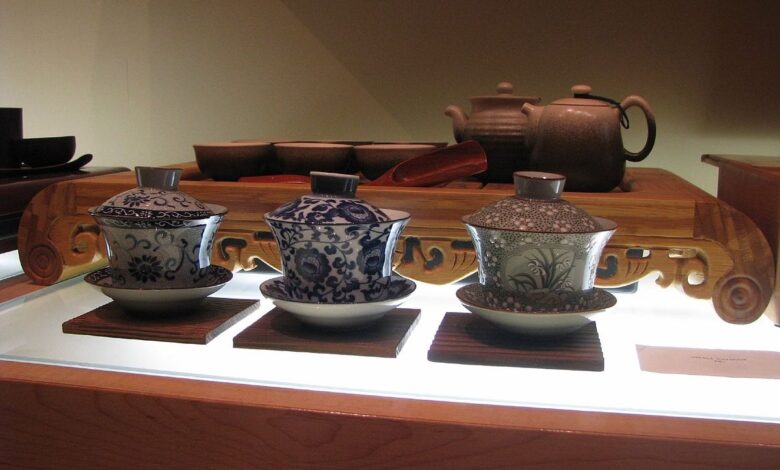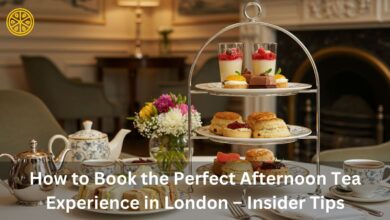The History and Cultural Significance of China Gongfu Tea Sets

Introduction to the Gongfu Tea Ceremony
Gongfu tea drinking remains one of China’s most beloved cultural rituals, its slow choreography fusing artistry with philosophy. A well-made Gongfu set can elevate the experience, letting wine-colored liquid flow through tradition into the glass of modern life. Long established online vendors such as www.teasetbox.com curate such collections, spotlighting porcelain that cracks like ice under fingertip pressure.
The practice derives weighty meaning from its name: gongfu, 工夫, signals skill honed through time rather than quick results. Brew, smell, sip, repeat—no step rushes ahead of the others, yet every motion quietly celebrates the leaves, the water, and the moment itself. A petite fairness cup, for example, grants every taster the same chance to judge hue, while tortoiseshell-like tea caddies guard powdered oolongs from sunlight. Whether novice or expert, participants leave checklists at the door and enter an encounter designed to stir mind and spirit.
A single Gongfu tea set—in all its tiny teapots, smell jars, and fine cups—can quietly reshape the way people meet and talk. In a corner of any busy kitchen, the same gear doubles as a miniature stage for craftsmanship, scenery, and ritual that still feels fresh even to first-timers who have never poured a leaf before.
Historical Background of Gongfu Tea
Gongfu preparation itself wandered out of the Tang Dynasty, somewhere in the long haze between the eighth and ninth centuries. At the time, drinking tea was grading up from roadside pick-me-up to serious court accessory, so poets, woodblock painters, and travelling merchants all debated the differences in aroma, glass, and water temperature. Those arguments hitchhiked along the Silk Road and split again at every stop, launching local quirks that eventually settled everywhere from Hangzhou green to Wuyi rock oolong.
The Gongfu tea ceremony, as modern practitioners know it, crystallized during China’s Song Dynasty (960-1279). Scholars call that period a watershed in imperial tea culture, an era when light, tender flushes began to export prestige instead of bulk. Connoisseurs sharpened their techniques, dabbling with timers and temperatures, and soon the idea of multiple brief steeps took hold. Out of those experiments emerged the Gongfu style—defining itself by precision and inviting the drinker to savor gradual shifts in flavor.
The title Gongfu, which translates as skillful effort, quietly announces the ritual’s true price in practice hours. Hours spent watching the kettle, testing humidity, fumbling, and retrying until instinct takes over. Over time, artisans designed a compact ensemble to meet that insistence on detail: a compact clay zhong, porcelain aroma cups, mini tasting bowls, and a carved tray that claims the spills. Each utensil claims exactly one role and disappears when not needed, leaving scent, hue, and taste to engage the senses without distraction.
Over centuries, Gongfu tea quietly drew ideas from hillside villages in Fujian and Guangdong, soaking up local styles and flavors. By Ming times, around 1368 to 1644, the brew had grown from an informal cup shared among friends into a showy rite complete with tiny pots and even smaller cups. That shift in scale marked a clean break from other Chinese tea customs, giving Gongfu its own signature look and tempo.
The twentieth century burst open with a Gongfu popularity boom that crossed rivers, provinces, and eventually national borders. Curious drinkers mixed that ritual with brews from Japan, India, and beyond, sparking a mini-revival of anything hand-crafted. Today, the ceremony still tours city cafés and hotel lobbies, tweaking a few steps to match modern pace while keeping hold of its old soul.
The Gongfu tea set embodies far more than a random assortment of cups and pots; it stands as a living link to a past that prizes patience, communal warmth, and a deep reverence for what a single leaf in hot water can reveal. Shared among close kin or brandished at raucous street fairs, the ceremony quietly extends an open invitation to anyone curious enough to trace China’s tea story with their own hands.
Essential Parts of the Set
A Gongfu tea set is assembled with purpose, each piece oiled into the next so that slope, heft, and surface all coax flavor into view. Without its tiny pitcher, squat Yixing pot, or teawatch, the choreography falters, yet every item is a performer in its own right and, strangely, an audience to the momentous calm that arrives when the first infusion hits glass. A brief list that follows highlights each workhorse and the modest job it handles in the ritual.
1. Teapot (Zhong)
The Gongfu-tea set revolves around its zhong, a pot scarcely larger than a coffee mug yet perfectly sized for multiple quick brews. Most weigh just 200 to 300 milliliters, enough for a small group but rarely so big that the leaves lose their temper. Clay versions steadily soak up flavors, almost seasoning themselves with every batch poured through them, while porcelain offers a cleaner, more neutral canvas. Even an everyday kitchen version winds up looking like a piece of sculpture in skilled hands, since most potters cover the surface with flowers, landscapes, or brush-written poems.
2. Tea Cups
Tasting cups take the stage immediately after the zhong, and because they are palm-sized, each drinker receives one all to themselves. A swallow or two fills the vessel, letting chai drinkers examine hue, smell steam, then tilt the rim to let hot liquid stretch across the tongue. Some sets include aroma saucers that hold only the wet leaves; sticking one’s nose inside that circle of porcelain turns scent into a separate encore outside the actual sip. Such small rituals force everybody at the table to slow down and pay attention, even during a casual afternoon session.
3. Tea Tray
A tea tray, or cha pan, quietly performs the neat trick of catching drips before they reach the table. Many are made of bamboo or porcelain, some even laced with a hidden drain to whisk away the dregs. Its wood grain or glaze quietly roots the brewing ritual in an unhurried aesthetic.
4. Tea Tools
No Gongfu setup stays coherent without its small parade of express tools.
- Tea scoop (Cha Yi) slides from jar to pot, delivering exactly the mass that a given leaf group needs.
- Tea strainer (Cha Ling) leans over the waiting cups, catches free bits, and spares drinkers the grit that dulls clarity.
- Kettle (Shui Huo), while sometimes summoned from outside the core set, boils water to a level that teases out each leaf’s secret flavor. Different varietals insist on different temperatures, and the kettle is the brass knob that controls that dial.
5. Tea Canisters
Loose tea leaves are notoriously sensitive; exposure to light, air, and humidity robs them of aroma and flavor. A well-designed canister—thick glass or porcelain lined with a rubber seal—keeps those leaves untouched by the outside world. Many collectors choose their containers the way others select artwork, so the surface design often doubles as a conversation starter during the afternoon session.
Cultural Significance of Gongfu Tea
People who describe Gongfu tea as merely a brewing technique miss half the story. The practice combines minutely measured timing, precise temperature control, and a short series of deliberate steps that collectively ask practitioners to slow down and center themselves. Its rituals echo centuries of Chinese philosophy, acting as both social glue and silent lesson in attentiveness.
1. A Ritual of Mindfulness
Gongfu tea exists, first and foremost, as an exercise in attention. You measure leaves, watch the clock, and test the temperature almost reflexively, yet every motion invites you to stop and notice. Each small choice becomes a lens through which to see the day—more ordinary, perhaps, but somehow larger too. By insisting that the work be done slowly, the craft slips quietly into your mind and persuades you to hold still for a moment.
2. A Means of Social Connection
In much of China, pouring tea still occupies the central slot at parties, family reunions, and contract signings alike. The ritual hands guests something to watch, something to sip, and very often something to talk about. Flavors, aromas, and the thrift of a single leaf turn small talk into a genuine exchange without anyone trying too hard. Even silence, framed by that little clay pot, feels companionable.
3. Artistry and Aesthetic Pleasure
Gongfu tea is never just a matter of boiling water; the whole affair whispers craftsmanship. Potters draw on Yixing clay or lean into fine porcelain, firing pieces that won’t sit quietly on a shelf for long. A sober tea pot may still sport tiny floral reliefs or an edge that mimics a riverbank after rain, so you discover something new at every pour. Picture the scene: clear leaves opening in pale light, glinting on cups you half suspect are more ornament than utility. Sight, texture, even the fine scent of unbroken wares turn casual sipping into a short gallery visit.
4. Memory and Cultural Continuity
Beneath the careful pours sits a family history so deep that even numbers forget who counted first. Most scholars pin the habit to Tang-and-Song inns where wandering poets swapped verses with steam rising from battered bowls. When some modern stranger bends over a tiny gaiwan, that ancient meeting-room still hums in the background. The ritual travels unchanged, so watching the leaves dance becomes as much an act of memory as an act of drinking. By repeating the gestures, we hand the story along intact and improbably relevant.
Gongfu Tea in Modern Society
Globalization has a way of crowding familiar customs into bustling city streets, and Gongfu tea is no exception. The flicker of candlelight glinting off an earthen teapot now figures in yoga studios, co-working lounges, and compact terraces, a quiet nod to intentional living. Observers note that, for many newcomers, the tea has become shorthand for mindfulness—even when the ceremony unfolds in a late-night chat above a roommate’s drum solo.
1. Reviving Traditions in Urban Environments
One glance at the crowded skyline and you might mistake the scene for pure hurry. Still, tiny storefronts keep springing up that promise a moment apart, and most tuck Gongfu tea somewhere in the menu. Pour-over counters offer the precision of espresso; these shops, by contrast, turn heat, time, and water into a ten-minute ceremony that leaves patrons momentarily unmoored from the phones in their laps. Enthusiasts admit they show up for the flavor, but they stay for the ritual, which hands them a rare chance to breathe inside all that noise.
2. Cultural Exchange and Global Influence
Gongfu tea has begun appearing in pop-up stalls from New York to Berlin, and shoppers who stop by often leave with a small gaiwan and a handful of loose leaves. Local organizers report that Chinese tea workshops sell out long before the actual event arrives. Students and professionals, curious about the rolling ritual they saw online, learn the multi-step pour from hosts who are equally eager to teach, share recipes, and explain the Daoist sweep behind each motion. Some participants sprinkle western jazz or African drumming into the session soundtrack, marrying the customs in a spontaneously hybrid tea break.
3. The Rise of Tea Communities
A decade ago, enthusiasts swapped tips on text-only forums, yet today a specially tagged post can reach thousands before evening rolls in. Smartphone cameras adore the orange-and-milk swirl atop a heated clay cup, and quick-cut edits turn those sips into a visual soundtrack even grandma understands. Vlog hosts freestyle mini lectures on oxidation levels between slow-motion close-ups of tea leaves dancing in the pot, inviting strangers to experiment right along with them. Neophytes who once felt shy now find themselves in a crowded global salon where no one minds sharing bad brews as long as the kettle stays hot.
4. Intersections with Wellness Culture
Gongfu cha nestles comfortably within today’s wellness zeitgeist. Its slow, deliberate brew feels less like preparing a beverage and more like pausing for a centered breath. The brief ritual encourages drinkers to linger over scent, flavor, and, when the moment allows, easy conversation. Oolong and pu-erh, popular choices for the ceremony, have traveled the health-supplement circuit, so the cup’s innocence is baked in.
Conclusion
The chinese gongfu tea set does not arrive as a simple kitchen tool; it walks in draped in tradition, craft, and social promise. Each careful pour opens a window onto a practice that Chinese households have cherished through centuries. Moments spent at the table chip away at the noise of the day, and in that quiet, friendships thicken and ancestry breathes. All of that sits cradled in the graceful arc of teaware no taller than a hand.
Gongfu tea appears in an era defined by instant messages and fast lattes, yet it quietly insists that we press pause. Pouring each round of leaves invites us to breathe, notice scent, and, for a few minutes, actually be in one place together. The tiny handle and clear vessel are no mere ornaments; they wed visual grace to centuries of customs, letting stranger and friend dip into a shared past. At the kettle’s edge, expert and novice alike are reminded that focus on the small things makes even water feel eventful.




